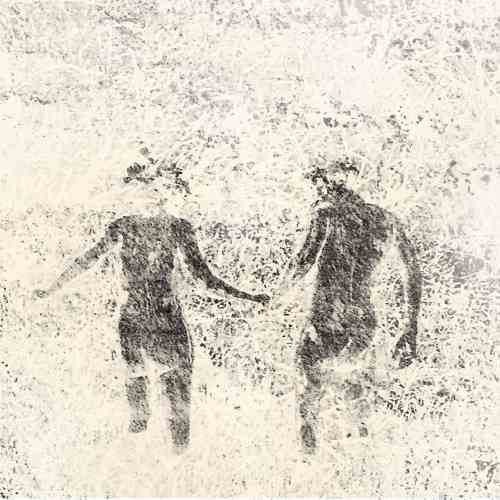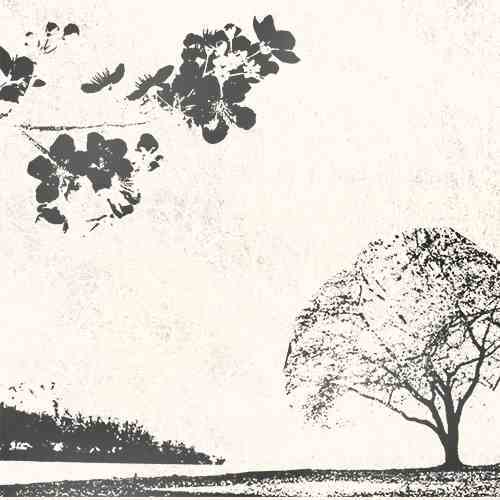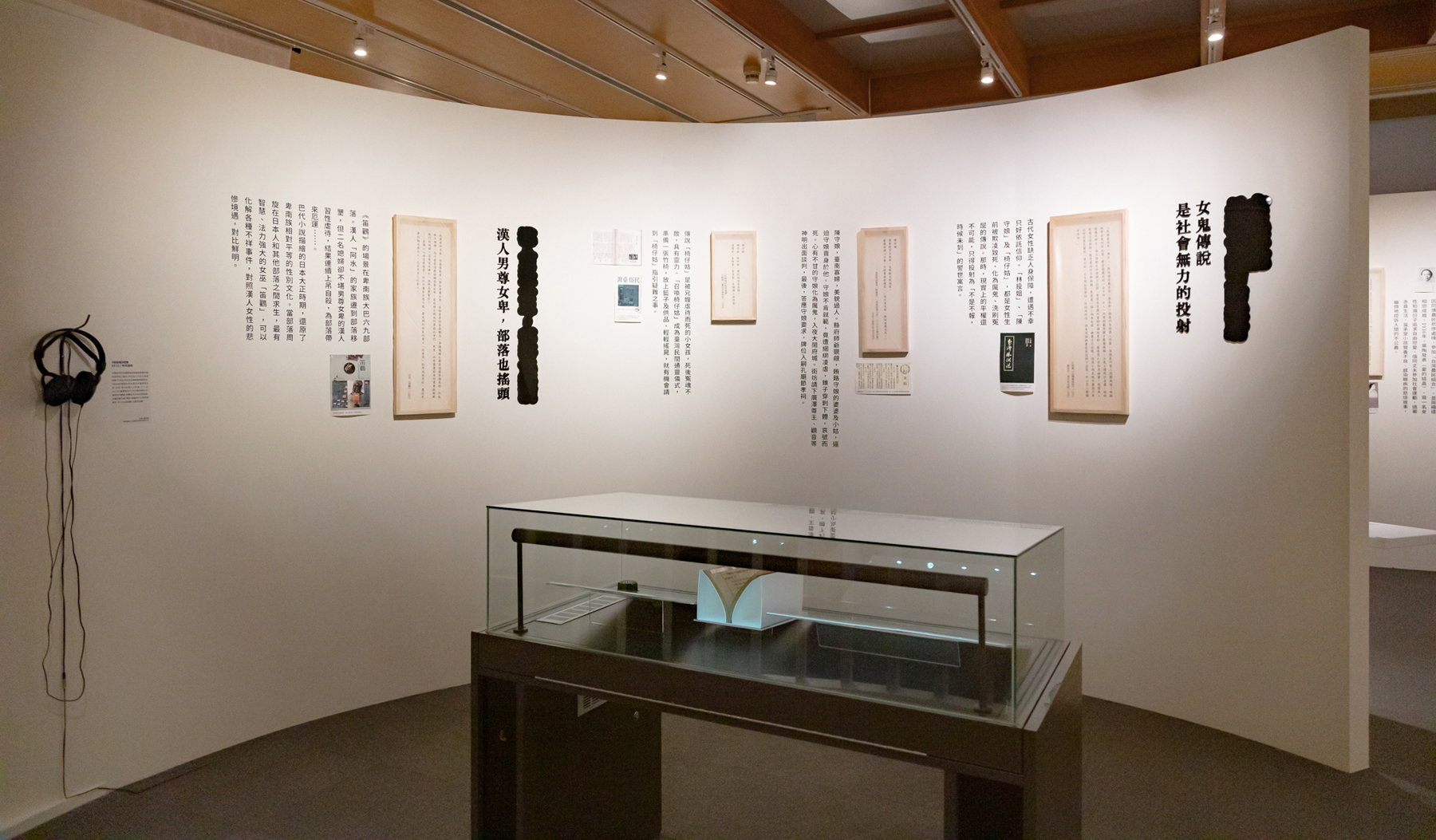
Legends About Female Ghosts Were a Projection of Their Helplessness in Society|Male Superiority in Han Society Was Frowned Upon by Indigenous People|Legends Were Transformed into Literary Works
Until the end of the Qing Dynasty, women in China were expected to "subordinate themselves to their father, husband, and sons and possess the four moral virtues." A woman's status was low. Many had their feet bound as a sign of beauty and submission. Women were not taught how to read. Moreover, a woman's marriage was decided by her father, so it was common that some women married the wrong men or suffered from domestic violence. The proverb, "a woman cannot control her fate, just as rapeseed are dispersed by wind", is an excellent encapsulation of the traditional social role of women.
Because women were inferior when they were alive, they could only resort to supernatural retaliation. Thus, in folk legends, almost all of the powerful and most ferocious ghosts are female.
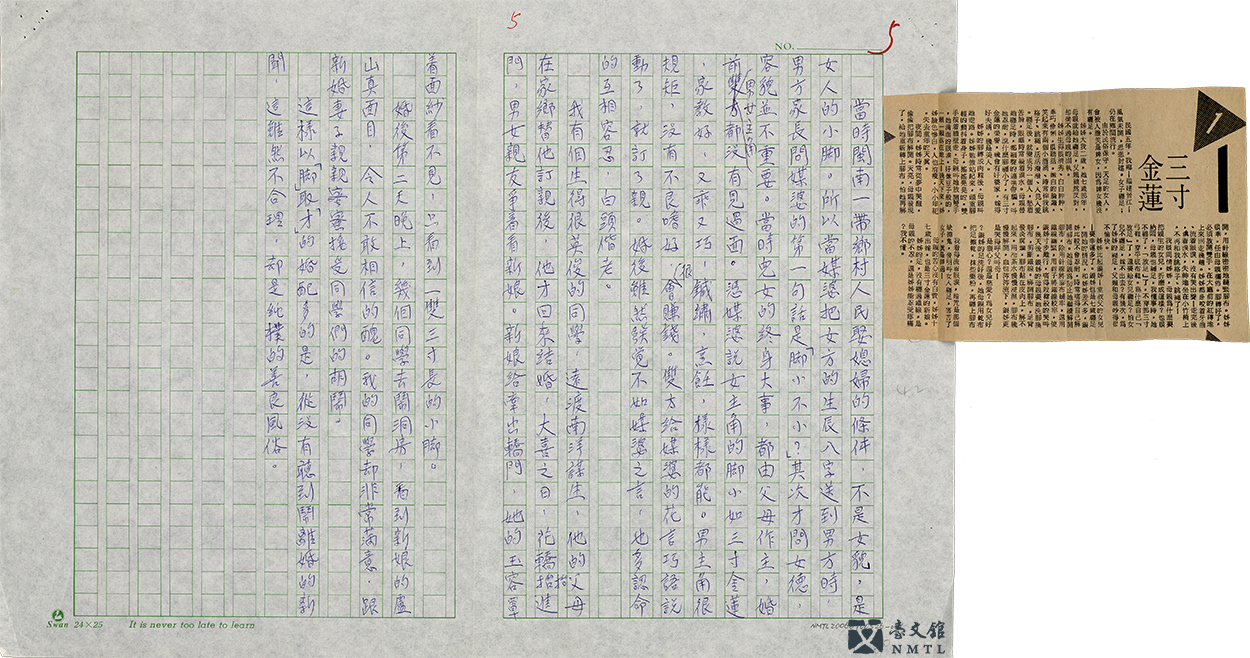
► The manuscript of REMINISCING THE PAST
Wu Man-she's manuscript, REMINISCING THE PAST, and a clipping from the TAIWAN TIMES. Both stories focus on the tradition of foot binding among Hokkien women in Taiwan. The articles mention that the foremost issue to consider when choosing a wife is the size of her feet, and, only afterward, her talents and virtues. This description reflects the social mores of the time, the social obsession with women with small feet, and the shackles of tradition. (Donated by Wu Min-yue / From the National Museum of Taiwan Literature permanent collection)
Legends About Female Ghosts Were a Projection of Their Helplessness in Society
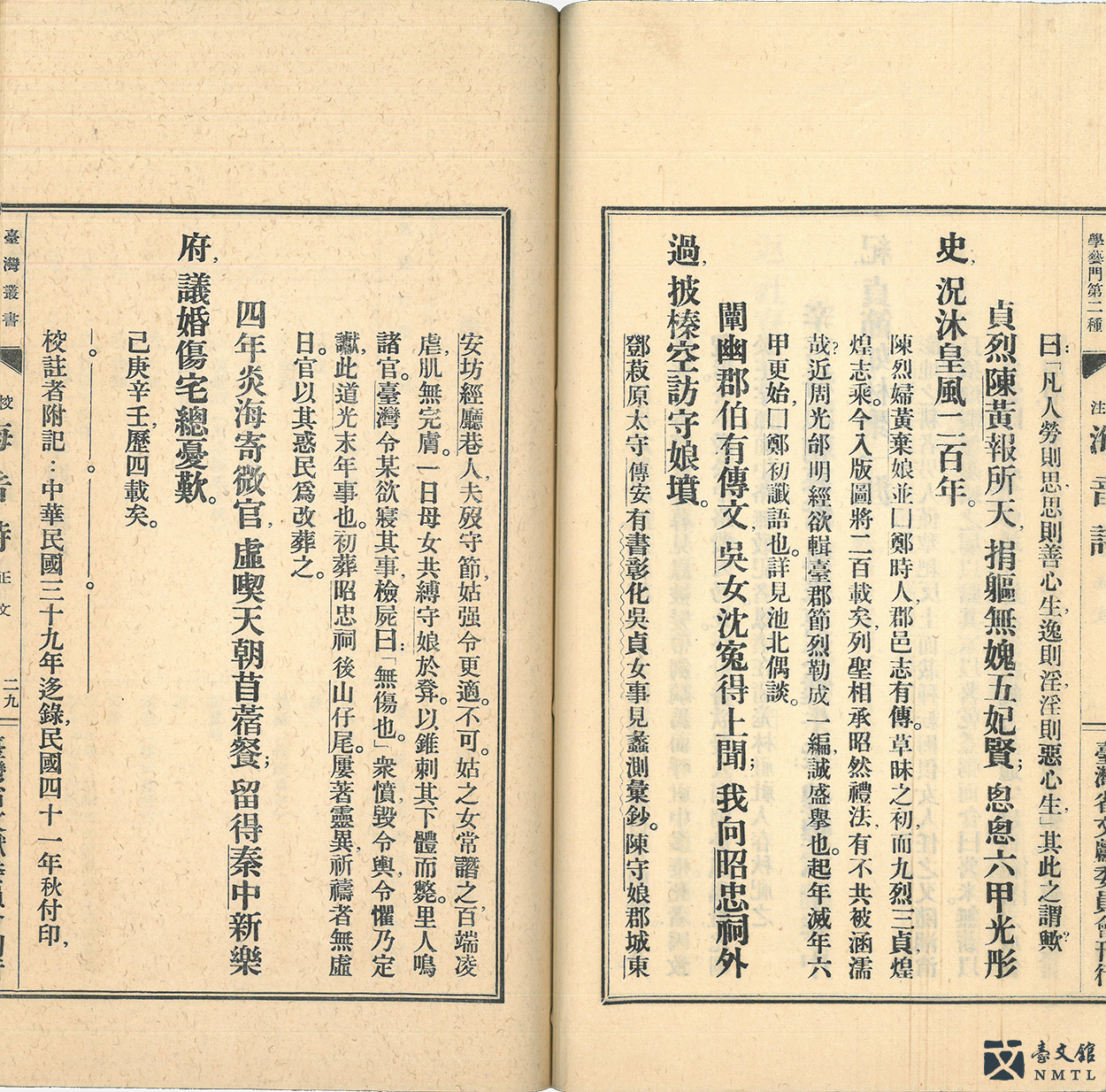
► ANNOTATED HAIYIN POETRY: FULL VOLUME
This contains the earliest text about "Lady Chen Shou-niang." The author Liu Jia-mou was a teacher at Taiwan Confucian Academy during the Qing Dynasty. He completed this poetry collection in 1852, which contains one hundred seven-character quatrain poems. The poems provide deep observations and illustrations of Taiwan. The poems are untitled. The poems depict various events, with annotations provided at the end of each. This display is the annotated version by Wu Shou-li based on the original book, and was published in 1953. (Donated by Xu Bing-ding / From the National Museum of Taiwan Literature permanent collection)
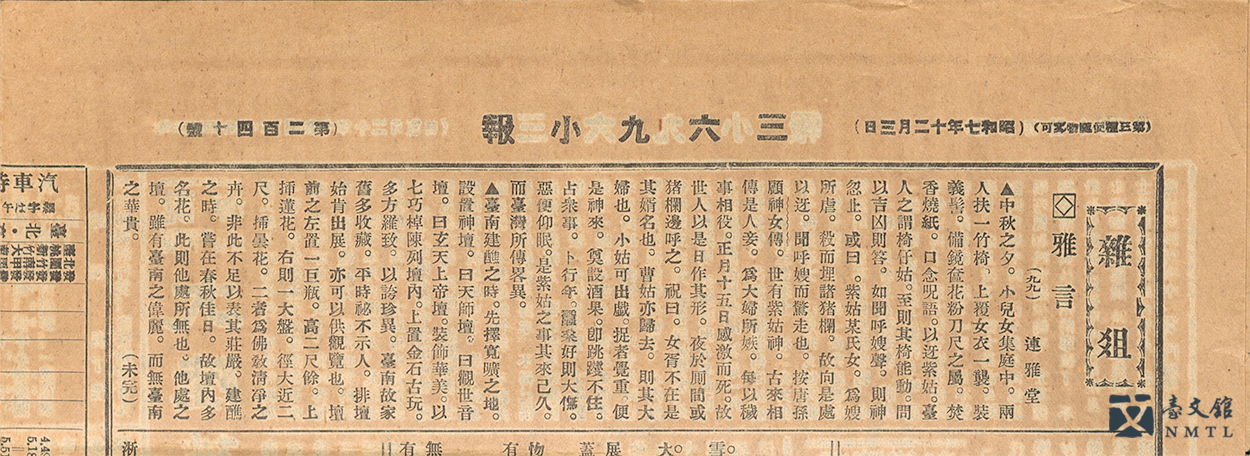
► No. 240, 369 TABLOID
In 1932, 369 Tabloid published Lian Heng's column "Valued Advice." One piece vividly describes how the children in the family gathered together to play a fortune-telling game during the Mid-Autumn Festival. 369 TABLOID was a popular Chinese-language magazine published in Tainan. It mostly features trivial contents and also many illustrated descriptions of sing-song girls. The publication highlights the popular entertainment at the time. (Donated by Su Hsin-yi / From the National Museum of Taiwan Literature permanent collection)

There was a woman in Tainan who lived frugally and saved a large sum of money. She then moved in with a merchant from Quanzhou. This merchant was sly and ruthless. He lured her to do business in Quanzhou and then absconded with the money without returning. The woman waited for years before realizing that she had been duped. Eventually, indignant, she committed suicide. However, her spirit remained restless. Her spirit appeared under a lintou tree every evening and often bought rice cakes from a vendor. Later on, people learned that she was a ghost, and, since then, nobody has dared to take that road. The gentry in Tainan came together and raised money to build a small temple to appease her soul, and only then did her apparition end its visitations. This temple is located in a sunken area around Lijiang Hospital next to Tainan Train Station. Last year, as part of renovations to this neighborhood, the lintou trees were cut down. Because this ghost appeared under a lintou tree, everyone called her Sister Lintou.
──Iwao Kataoka, TAIWAN FUZOKUSHI (1921); translated by Chen Jin-tian and Feng Zuo-min (1981).
⁍ Women were particularly vulnerable, peripheral members of traditional society. Thus, when they were caught up in unfortunate events, religion was often their single source of solace and comfort. "Sister Lintou," "Lady Chen Shou-Niang," and "Girl on a Chair" are all stories of abused women who died and transformed into ghosts to avenge their mistreatment. At that time, equality in real life was impossible. So, these cautionary tales emphasize the message that: "what goes around comes around."
Male Superiority in Han Society Was Frowned Upon by Indigenous People
He understood that Ah Shui's family upheld traditional Han family values. Men are superior to women and the elderly must be respected by the young. Every daughter-in-law had successfully endured this system. But, he couldn't understand the inordinate emphasis on men being superior to women and why women in the family fought against and bullied one another. Why did the mother-in-law pick on her new daughter-in-law? Without these women, how would the family see itself through to the next generation?
…Jin Jishan pondered these thoughts, but still couldn't hit upon a satisfactory answer. After all, Puyuma men are raised in a matriarchal society and follow their wives when married. They are never taught to beat their women, especially so with women in their own family.
──Badai, SORCERESS DIGUWAN, 2007.
⁍ SORCERESS DIGUWAN is set in the Puyuma village of Tamalakaw. Ah Shui, a Han person, and his family move into the village and settle down. However, two of the daughters-in-law hang themselves after being constantly abused by their family, who consider men to be superior to women. Their suicides are believed to bring back luck to the tribe.
Badai's novel is set in the more-equal gender culture of the Puyuma during the middle decades of Japanese colonial rule. As the tribe struggles to survive in their dealings with the Japanese and other indigenous tribes, the wisest and most-powerful sorceress, Diguwan, helps resolve all kinds of ominous incidents. Her success stands in stark contrast to the miserable state faced by contemporary Han women.
Legends Were Transformed into Literary Works
"Revenge of a female ghost" was a classic aesthetic theme in moral philosophy. It reflected local imaginings about equality in the underworld, and inspired artists of later generations to create spinoff stories. Since the 1920s, female ghostly figures have been given different characteristics and been incorporated into novels, music, movies, and manga comic books in ways that differ significantly from large-scale narratives, which are dominated by male protagonists.
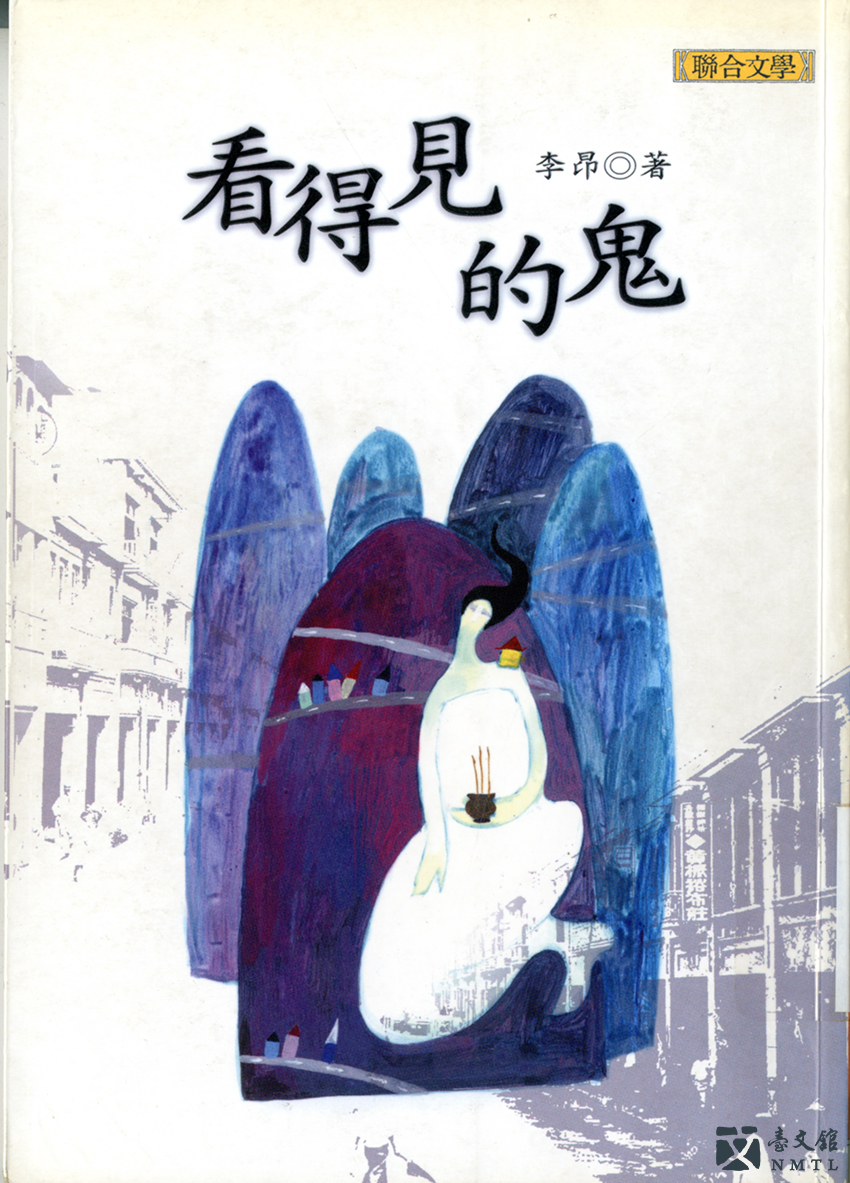
►VISIBLE GHOST. Li Ang's work in 2004, published by UNITAS Publishing Co.
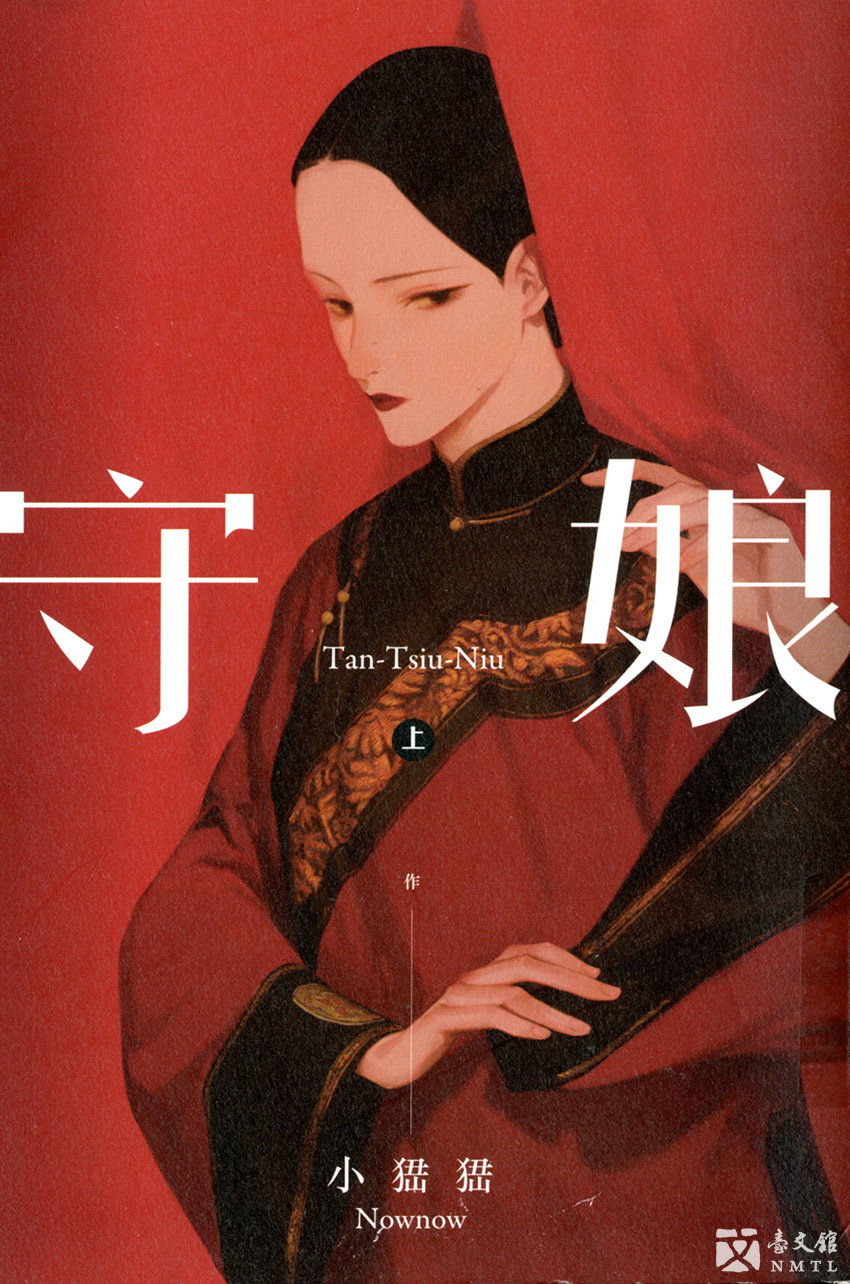
►SHOUNIANG. Cartoonist Xiaonownow's work in 2019, published by Gaea Books.
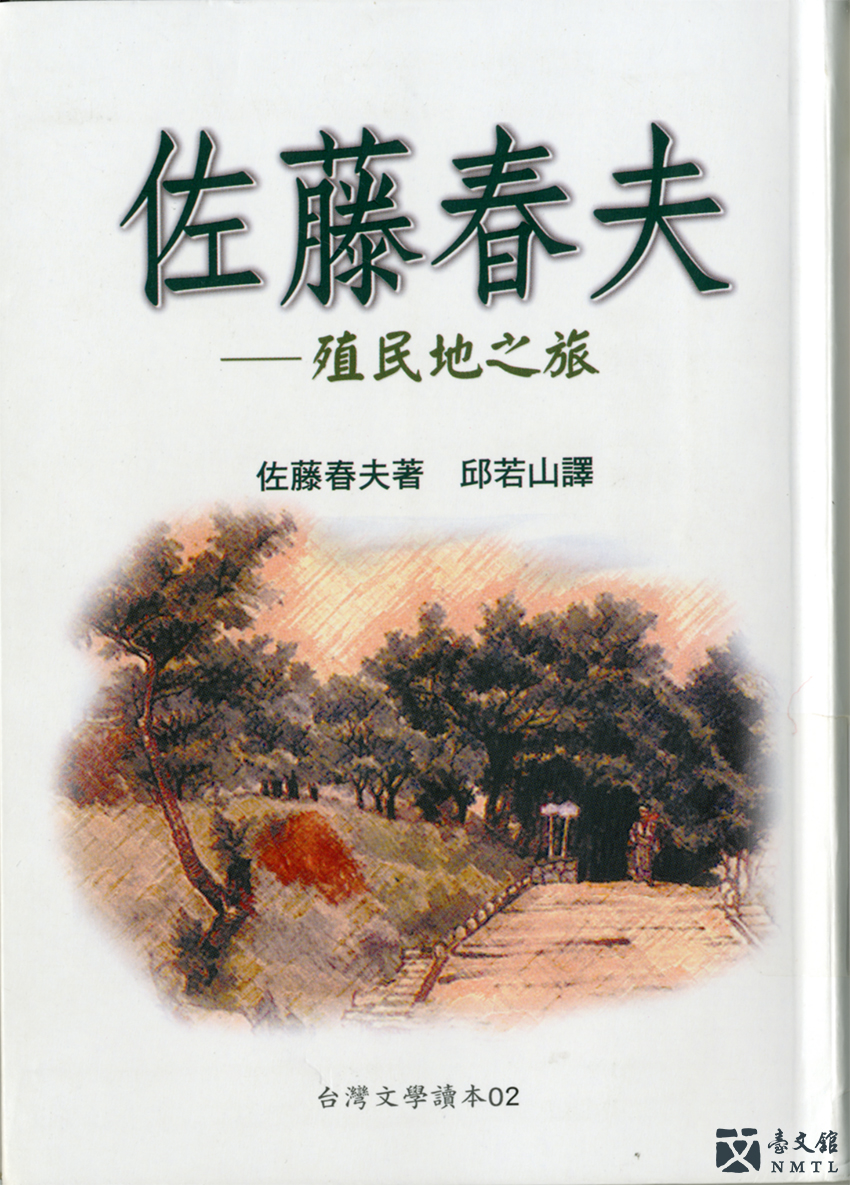
►SHOKUMINCHI NO TABI (A JOURNEY IN THE COLONIES). Haru Satō's work, translated by Chiou Ruoh-shan, and published by Grassroots Publishing House in 2002.
